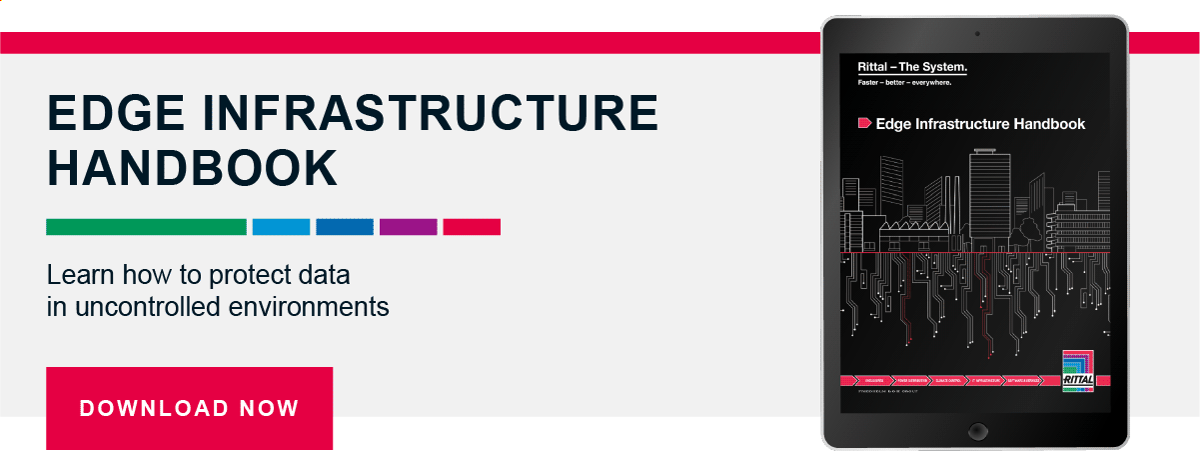Edge vs Hybrid Data Centers: What’s the Difference?
Most people would be surprised to learn that the concept of cloud computing has been around since the 1960s, though it didn’t enter into the lexicon of the general public until 2006. The `Birth’ of The Cloud was an important milestone, giving organizations a way to store and process data without having to invest in their own infrastructures. Utilizing the cloud reduces a company’s cost of storage, eliminates the need to perform ongoing updates, and minimizes the number of staff required to manage the network; it can also improve data security. Finally, the significant costs associated with the design, construction and operation of an in-house data center can be reduced to near zero.
Public and Private Clouds
A public cloud is a cloud service, offered by a cloud provider, used by multiple customers; a private cloud is one also offered by a provider but not shared with any other organizations. One analogy used to explain the difference is this: the public cloud is like renting an apartment, while a private cloud is like owning a home.
There are several variations of both these models, but this post will focus on Edge vs Hybrid Data Centers and how they support the cloud environment.
Edge Computing
Installations at The Edge reduce use of the cloud by bringing data processing and storage closer to the processes and equipment generating and using it. In an Edge computing architecture, critical data is processed at the point of origin via a server positioned in close proximity to the source, allowing for immediate access. Data that is not as time-sensitive is sent to the cloud, physically in a `traditional’ data center for longer-term storage, analysis, or compliance record-keeping.
Manufacturing facilities are one of the primary users of Edge. More and more of them are taking advantage of the Internet of Things (IoT), and its IIoT (Industrial IoT) step-child, where equipment with sensors are connected to devices and relay data that’s used to make more informed productivity and efficiency decisions.
With IoT, IIoT, and the proliferation of smart devices, Edge computing is particularly valuable when massive data loads generated at a hyper-local level would stress a data center. Data needed for real-time analysis is handled at the Edge; data with less urgent value can be pushed to a data center. This optimizes the flow of data by utilizing costly bandwidth for only the data that needs to be in the cloud.
The benefits of The Edge include:
- Reduced latency. Data analysis performed at the very edge of where it’s created minimizes latency and ensures faster response times; data is more timely and actionable. Edge computing also reduces the overall traffic loads of the organization, improving the performance of all its applications.
- Cost savings. With an Edge deployment, data is prioritized at a local level, with less time-sensitive data being sent to the cloud and more critical data remaining at the Edge, reducing the costs of transferring and managing it.
- Reliability. Many Edge users, like the Oil & Gas industry, operate in rural or remote areas where connection to the Internet is spotty at best. With an Edge deployment, though, devices store and process data locally, improving the reliability of the system by reduced dependence on the cloud.
- Scalability. With the right IT enclosures (sometimes referred to as IT cabinets or racks), scaling your Edge deployment becomes much easier. The best are modular enclosures, as these feature flexibility that makes reconfiguring simple. Modular enclosures are made of parts that can be rearranged without the need to cut or weld to add additional equipment, even if the sizes of the equipment don’t match what’s already in the enclosure. They also allow you to apply different cooling methods within the same enclosure to accommodate various types of equipment.
According to one report, the worldwide Edge market will reach $43 billion by 2027, with Industrial, Energy, Utilities, Healthcare, Agriculture, Transportation/Logistics and other industries taking advantage of the opportunities it affords in terms of added capabilities and cost-savings.
Hybrid Cloud Computing
Moving from The Edge, Hybrid cloud computing offers the best of both worlds, providing the flexibility and scalability of the public cloud, with the low risk of data exposure of the private cloud. The Hybrid cloud can be supported by an Edge data center (also referred to as a Spine data center) - close to The Edge but with the added robustness provided by a traditional data center space. The Edge/Spine data center provides the backbone connecting local edge deployments to hyperscale spaces supporting cloud computing and can easily be deployed locally as well as in a larger data center space.
Within a single organization there are varied operational needs, each with computing and storage requirements best suited for either the public or private cloud. Some, like a company’s internal Audiovisual department, need to be able to access and share large media files; others, like HR and Payroll, need a solution that protects sensitive employee data. The organization will benefit by choosing a hybrid cloud so that each functional area can access the most appropriate cloud.
The ability to choose which cloud to use is a primary benefit of the hybrid cloud; others include:
- Risk Mitigation. Utilizing multiple cloud environments improves resiliency, ensuring you have the computing and storage resources available at all times, minimizing the risk of downtime. If a power outage caused by a weather event downs one cloud environment, for example, the other would still be available.
- Compliance. Many organizations must comply with government and/or industry regulations, and having redundancy in cloud computing environments may help them meet those.
- Flexibility. When computing and processing demands peak, a hybrid environment gives companies the option to move their on-premise infrastructure up to the public cloud to handle the overflow, freeing up its local resources for sensitive data or applications.
Using both public and private clouds simultaneously is relatively simple. A universal management tool makes it easy to shift workloads between the two environments, and allows for data and applications to be shared between them.
To learn more about the best ways to deploy an Edge solution, download our Edge Infrastructure Handbook. In it you’ll find valuable insights about the features – monitoring, security, cooling and power – that will help ensure optimum performance of your Edge deployment.
-Herb Villa, Rittal Sr. Applications Engineer




